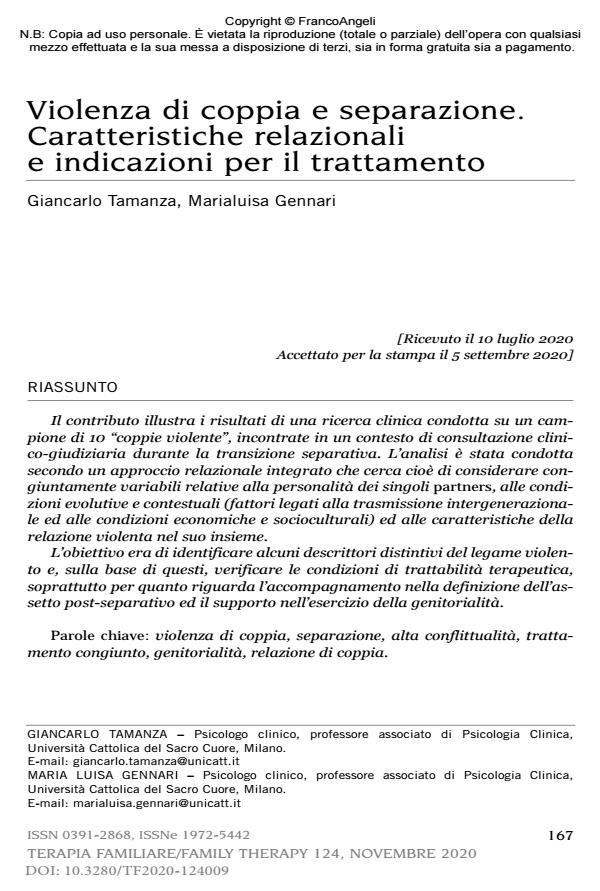Intimate partner violence and separation. Relationship characteristics and treatment
Journal title TERAPIA FAMILIARE
Author/s Giancarlo Tamanza, Marialuisa Gennari
Publishing Year 2021 Issue 2020/124
Language Italian Pages 27 P. 167-193 File size 145 KB
DOI 10.3280/TF2020-124009
DOI is like a bar code for intellectual property: to have more infomation
click here
Below, you can see the article first page
If you want to buy this article in PDF format, you can do it, following the instructions to buy download credits

FrancoAngeli is member of Publishers International Linking Association, Inc (PILA), a not-for-profit association which run the CrossRef service enabling links to and from online scholarly content.
The paper illustrates the results of a clinical research conducted on a sample of 10 "violent couples", met in a context of clinical-judicial consultation during the separative transition. The analysis was conducted according to an integrated relational approach that seeks to jointly consider variables relating to the personality of the individual partners, to the developmental and contextual conditions (factors linked to intergenerational transmission and to economic and socio-cultural conditions) and to the characteristics of the violent relationship in the whole. The goal was to identify some distinctive descriptors of the violent bond and, on the basis of these, verify the conditions of therapeutic treatability, especially with regard to guide in the definition of the post-separation structure and support in the exercise of parenthood.
Keywords: Intimate violence, separation, high conflict, joint treatment, parenting, couple relationship.
- Separazioni precoci alla nascita del primo figlio: dal patto di coppia al fallimento nell'alleanza cogenitoriale Mirko Colone, Lorenza De Filippis, Elisabetta Gobbi, Clara Hendel, Veronika Kerollous, Mariangela Melodia, Silvana Yared, Silvia Mazzoni, in TERAPIA FAMILIARE 132/2023 pp.75
DOI: 10.3280/TF2023-132005
Giancarlo Tamanza, Marialuisa Gennari, Violenza di coppia e separazione. Caratteristiche relazionali e indicazioni per il trattamento in "TERAPIA FAMILIARE" 124/2020, pp 167-193, DOI: 10.3280/TF2020-124009